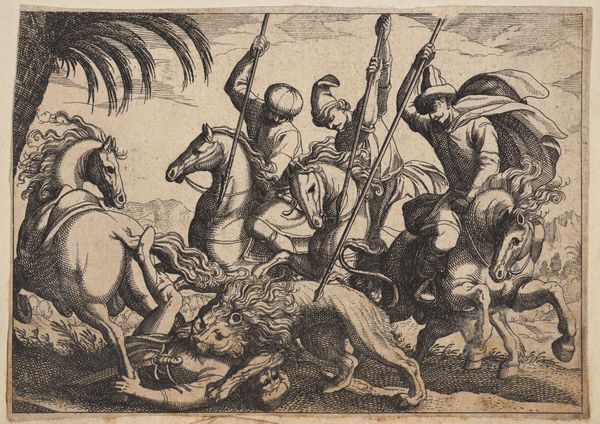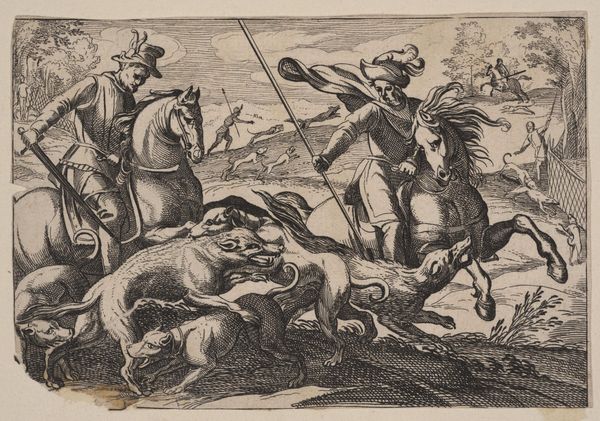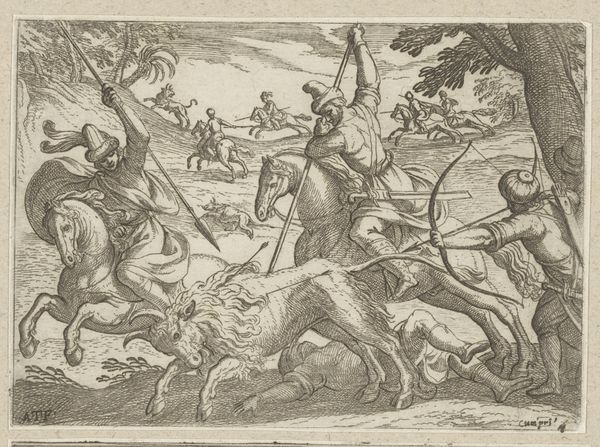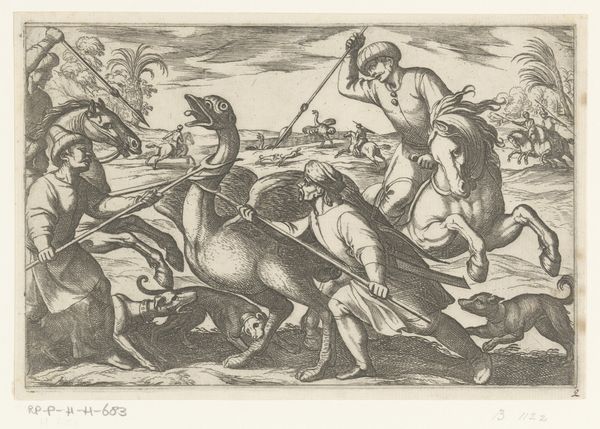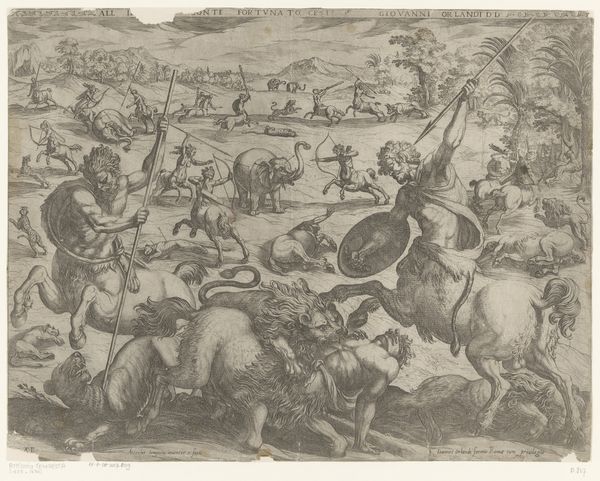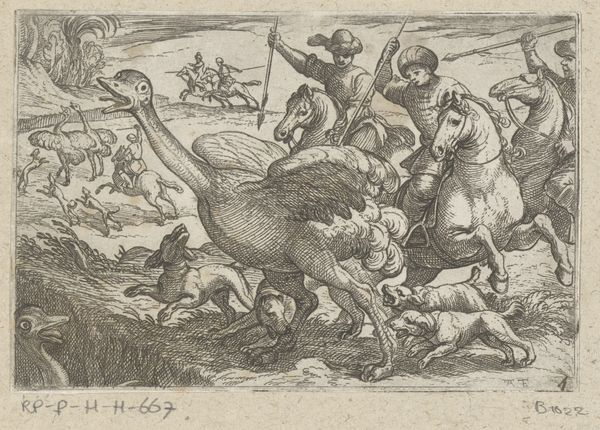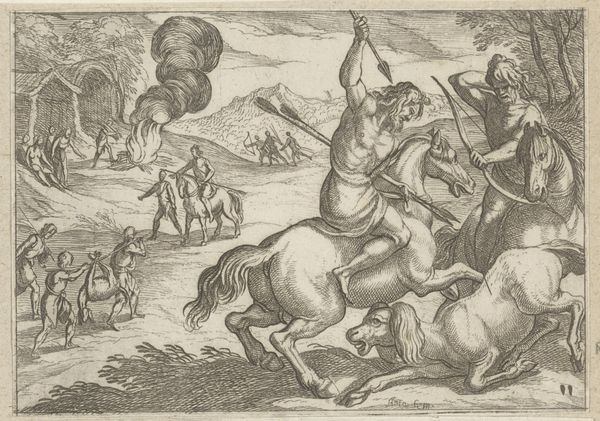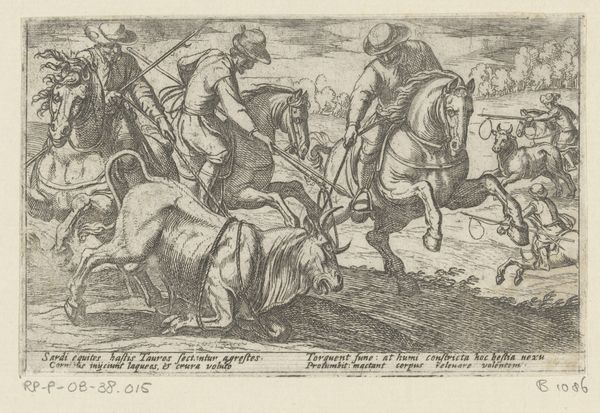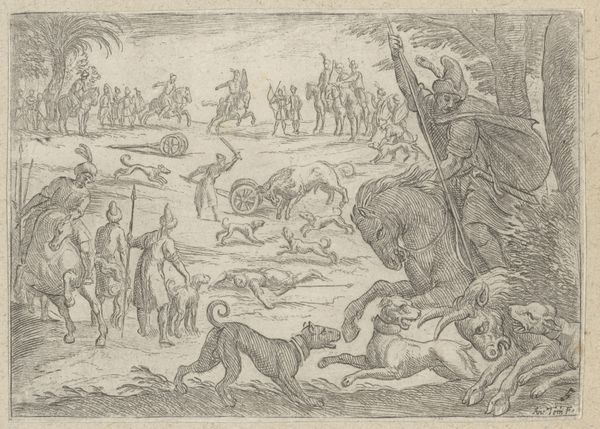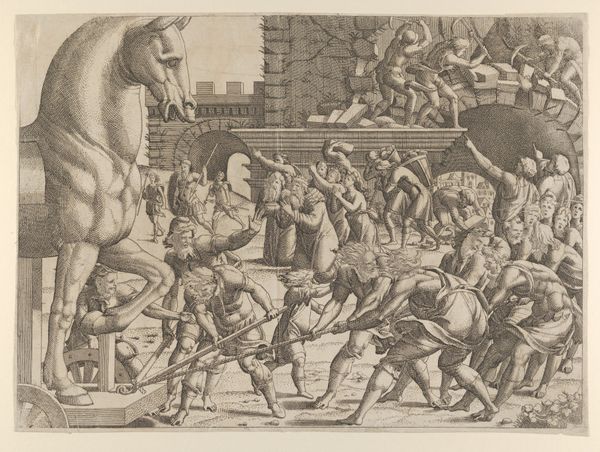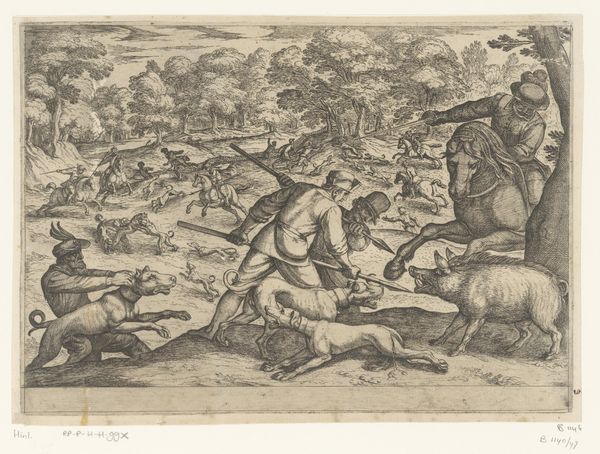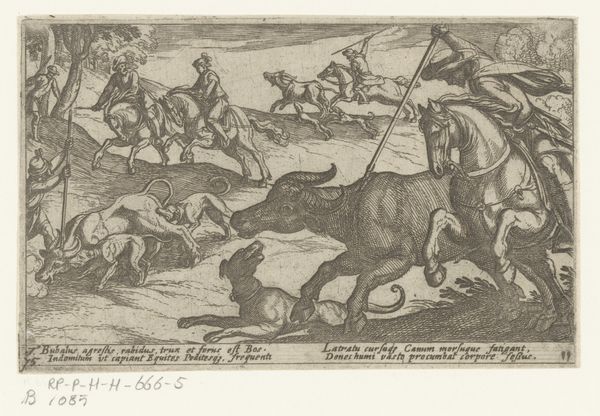
print, etching, engraving
#
narrative-art
#
baroque
# print
#
etching
#
landscape
#
figuration
#
line
#
genre-painting
#
history-painting
#
engraving
Dimensions: height 101 mm, width 140 mm
Copyright: Rijks Museum: Open Domain
Curator: This etching, made in 1598 by Antonio Tempesta, is called "Jacht op olifant waarbij de olifant een man doodt," which translates to "Hunting of elephants with the elephant killing a man". What leaps out at you? Editor: Raw, unflinching… and chaotic. It’s as though Tempesta plunged us right into the heart of the hunt, mid-disaster. You see that swirl of spears and riders, a storm of violence converging on a scene of abject horror, it’s fascinating to watch. Curator: Absolutely. Baroque art often favored drama, and Tempesta doesn't disappoint. Consider the context. In the 16th century, encounters with elephants would have been limited and exotic for many Europeans. The print becomes a form of sensationalized news. Editor: Sensationalized, yes, but it also reveals a lot about the relationship between humanity and the natural world during that era. This wasn't simply about observation, it was about power and domination. This scene serves to document how they perceive, treat and represent non-Western people and species. That dead man under the elephant's foot becomes symbolic. Curator: That figure… It feels less heroic struggle and more a study of helpless desperation. The linework is exquisite; look how Tempesta captures the light glancing off the elephant's massive form, but there's a roughness to it as well. The poses seem...contorted, almost theatrical. Editor: The drama feeds into larger discourses about European colonialism. These depictions were strategically used to justify exploitation, to claim dominion. The animal is depicted as wild, dangerous, and “other” justifying violent intervention. Curator: The landscape itself, almost like a stage, reinforces this sense of removed observation. We’re witnessing a constructed narrative. Does the emotional weight feel a little... hollow to you, though? It’s action, sure, but something feels missing in the men's faces. Editor: Perhaps that is Tempesta inviting us to reflect on the cost of exploitation and conquest... a haunting silence. Or perhaps not. I suspect that as observers removed by centuries, we read a certain post-colonial guilt back onto it. Curator: Perhaps. For me, this work now feels a bit troubling; the horror in this engraving invites us to contemplate more about the impact of globalization, trade, and exploration in the Baroque Era. Editor: Ultimately, Tempesta has provided us with much more than an account of elephant hunting, I would say.
Comments
No comments
Be the first to comment and join the conversation on the ultimate creative platform.
